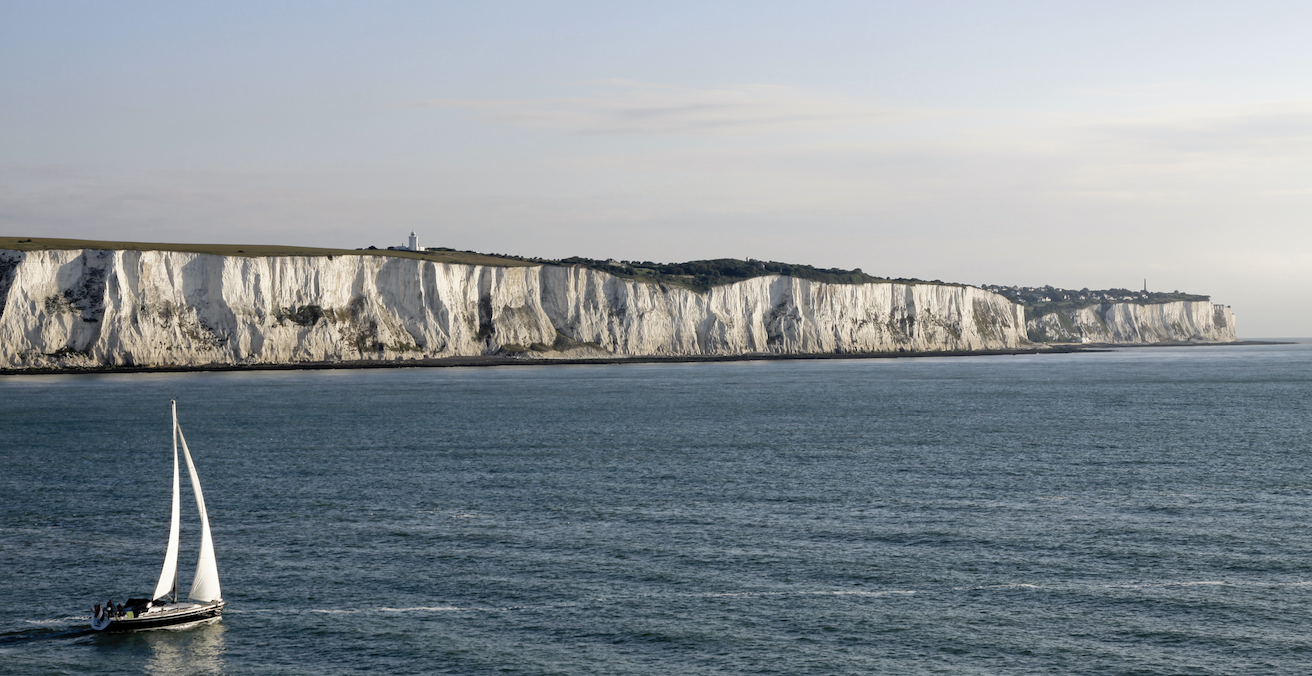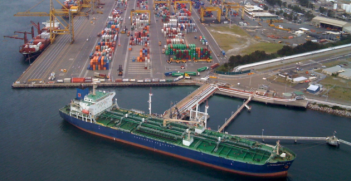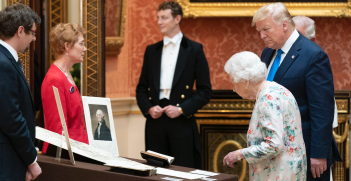Brexit – A View from Europe

With elections for the European Parliament approaching on 23-26 May and the UK now having to take part in them after Theresa May was granted more time to piece together a withdrawal agreement, it is worth contemplating the rarely considered view of the Brexit spectacle from the other side of the Channel.
Twenty-five years ago, almost to the day, the Channel Tunnel was opened connecting the United Kingdom (UK) and France. I can still remember a British tabloid newspaper running a headline that read something like: “Europe connected to Britain.” Not only was it amusing to see the UK perception about how they self-identified as somehow not on the European Continent, but it also underscored the Island identity – their self-identification as outsiders.
The twenty-seven other European Union member states (EU-27) in turn have often considered the UK as an “awkward partner” – a term coined a quarter of a century ago by British political scientist Stephen George. Indeed, the UK is perhaps the most awkward of all European partners – but for many reasons also much loved by its neighbours both near and far. This partner is now filing for divorce. The rest of Europe has not been sure whether it should be laughing or crying.
On the whole, the prevailing sentiment has been sadness in seeing this partner leave. It was not at the request of the rest of Europe. In fact, if the rest of Europe had its way, it would rather “forgive and forget.” It would prefer to reintegrate this member back into the European family, rather than be a silent bystander as the UK does self-inflicted damage. In fact, one could almost say the UK appears to be taking a road that is heading to institutional, parliamentary and constitutional self-destruction.
Of course, the reality is much more complicated and, in a number of ways, the situation presents Europe with a double-edged sword.
The UK is, by all accounts, a unique EU member state. It only joined the EU in 1973 after having applied numerous times. Today, it is the second largest economic power in the EU and has the third largest population after Germany and France. Due to its world dominance in the 18th, 19th and early 20th centuries, it has a unique relationship with a number of the world’s most influential (what in the EU are known as “third”) countries. No matter how resentful one might be about the UK’s history, much of its current “standing” can be traced back to this time. Its “soft power” in the world has been in many ways a result of its Imperial legacy, having often developed strong relationships with people and institutions in former colonies – even if having done so also caused considerable damage to local customs and cultures. Not only has it kept in touch with Australia, Canada, New Zealand, and the United States, it has also left a mark and maintained relations with Bangladesh, Hong Kong, India, Jamaica, Pakistan and South Africa, to name but a few. In this way, it has expanded its sphere of influence. Knowledge of the UK goes far and wide. Its traditions, including parliamentary democracy, the rule of law, diplomacy, foreign policy and its outstanding universities, are known around the world – not to mention the spread of English as the leading international language or the popularity of its sports such as football.
The rest of the EU (now often referred to as the EU-27) were taken by surprise on the 24 June 2016 – the day after the referendum in which 72.2 percent of eligible voters expressed their preference with 51.9 percent voting to “leave” and 48.1 percent voting to “remain.” A small, but according to some clear enough, majority tipped the balance in favour of the path to leave the EU. Yet there was no plan, no clearly identified and agreed trade-offs, no timetable, no blueprint and no choice for a particular future relationship with the EU. Furthermore, it was a major concern the UK itself was split in terms of its political make-up. The Scottish and the Northern Irish voted by 62 percent and 56 percent, respectively, to remain. The Welsh and English voted by 52.5 percent and 53.4 percent, respectively, to leave. But there were also further divisions. In England, most rural areas voted to leave while most of London vote to remain. Gibraltar, perhaps not surprisingly, voted to remain – but at 96 percent, people were still stunned by the size of the majority.
All this eventually brought home another factor. Namely, that the exercise of finding a way to leave the EU might lead to the breakup of the UK itself. No one wanted to touch that political hot potato. The UK is a historical artifact. It was first put together by Acts of Union in England in 1706 and Scotland in 1707, with Ireland joining in 1800 (the Catholic part leaving in 1822 and Northern Ireland re-joining the UK a day later). But it has remained an uneasy union. For the longest time, it was a very centralised state. But in recent decades this triggered a process of devolution. For some the process has not gone far enough. Scottish nationalists have advocated leaving the UK. To this end, Scotland held a referendum on the topic in September 2014. And although a majority of 55.3 percent voted to stay in the UK, one element that influenced the outcome was a lack of clarity on the status of an independent Scotland in the EU. Various European leaders had shed doubt on whether an independent Scotland could stay in the EU, suggesting that it may have to break with the EU and re-apply for membership. These difficulties were related to concerns about other secessionist movements in Europe such as Spain’s internal constitutional difficulties with Catalonia.
During the past 35 months, the question of how to ensure lasting peace on the island of Ireland, with the Good Friday Agreement relying heavily on both parties being in the European Union, has emerged as a dominant issue. Few voters had carefully considered all the details of leaving the EU. Fewer still had contemplated the intricacies of the constitutional basis of the Good Friday Agreement or the nature of the future trade relationship the UK would have with the EU (“Norway,” “Canada” or somewhere in between?). Only a select group of people, mainly lawyers, really understood the little amount of influence the UK could still exert on the EU from outside whilst still wishing to retain access to EU markets. Citizens did not know whether the UK would want to become a major player if it joined the less intrusive trade organisations such as the European Economic Area (EEA) or rejoined the European Free Trade Association (EFTA). Or whether no such model would be desirable and it would leave with no formal relations at all.
The EU-27 early on made one vital decision: to stay unified on the issue of Brexit. Of course, Brexit has wildly differing effects on the EU-27. For the Republic of Ireland, maintaining good relations and coming up with the least disruptive arrangement is crucial. For the Netherlands, the UK is a major trading partner (its third largest; larger than with France). Germany, which also trades more with the UK than any other EU member state, was also keen to maintain good relations with the UK, and thus willing to be more accommodating. However, others such as France, Belgium and Spain were less willing to budge. Yet, they all stuck to the mantra that they would let the supranational negotiators speak on behalf of the EU-27. They sought to bury their differences and pick a single negotiator. They chose Michel Barnier, a Frenchman, to speak on their behalf, aided by a task force of nine experts headed by the Belgian diplomat Didier Seeuws.
Mostly the member states have been very disciplined about unity and largely refrained from making derogatory comments about the process, which has mostly worked. A notable exception came from President of the European Council Donald Tusk who in February cynically tweeted: “I’ve been wondering what that special place in hell looks like, for those who promoted #Brexit, without even a sketch of a plan how to carry it out safely.” It was a not-so-subtle dig at Theresa May for her to get on with arranging her Brexit deal.
In order for the Brexit agreement to pass, the European Council needs a majority of 72 percent of the 27-member states representing at least 65 percent of the population of the EU-27. The EU relied heavily on EU institutions to work on the agreement. Even the European Parliament needs to give its consent (voting by a simple majority). Some lines were drawn in the sand: the UK could not embark on “cherry picking,” the negotiations would have to be a single package and there were to be no informal talks. On matters of security and defence a “political declaration” was agreed in December 2018.
All in all, the view from Europe is one of wait and see. The timing of major events is currently favouring this stance. The EU has to hold elections for the European Parliament next week, which will determine the most important offices in the EU. By the end of the summer, a new Commission President and Council President will have been elected. Soon after, the EU will want to “get on with it.” At that point, they will want the UK to have decided whether or not they are staying or leaving. Perhaps by the time the new Halloween deadline comes around, the united front might begin to show some cracks. Or perhaps the UK will have had either general elections or a second referendum, which could still turn the tides and have the UK come back into the EU. No politician in Europe is keen to speculate about it – out of fear of being accused of breaking the norm of EU-unity and of meddling in British domestic politics. But there is only so much patience in Europe. Once the timetable changes, stances will change. For now, everyone is waiting for the outcome of the European Parliament elections.
Professor Amy Verdun teaches European politics and political economy at the Institute of Political Science at Leiden University and is on leave from the Department of Political Science at the University of Victoria, in British Columbia, Canada, where she has been since 1997. Her research deals with European integration, governance and policy-making, political economy, as well as comparisons between the European Union and Canada.
This article is published under a Creative Commons License and may be republished with attribution.





